Introduction:
Imagine capturing every breathtaking vista, candid moment, and vibrant detail of your travels with stunning clarity, all without the burden of bulky gear. For years, serious photography meant sacrificing portability lugging around heavy cameras and lenses while trying to catch the perfect shot.
But the game has changed. Mirrorless cameras have transformed travel photography by combining professional-grade image quality with compact designs and advanced features. These cameras offer the perfect balance of portability and performance, allowing you to take your photography to the next level without compromise.
In this guide, we’ll cut through the technical noise and focus on helping you find the best mirrorless camera for your adventures. Whether you’re an experienced photographer or a travel enthusiast looking to capture memories more beautifully, you’ll get a clear understanding of which options are best suited to your needs, budget, and style. By the end, you’ll be equipped with the knowledge to make an informed decision and choose the perfect companion for your travel photography.
Why Mirrorless Cameras Are Ideal for Travel
Portability & Compact Size
One of the biggest challenges for travel photographers has always been the weight and bulk of gear. Traditional DSLRs, while capable of capturing incredible images, can be heavy, leading to travel fatigue. Mirrorless cameras, however, are smaller and lighter, making them a much better fit for those on the move. They are easy to pack in carry-on luggage or daypacks, so you won’t have to worry about lugging around a heavy camera. This means you can focus more on your photography and less on your back pain.
For many travelers, gear weight can be a significant pain point. If you’ve ever struggled with heavy camera equipment while trying to capture the perfect shot, a mirrorless camera could be the ideal solution, giving you all the tools you need without the hassle.
Exceptional Image Quality
Don’t let their small size fool you mirrorless cameras pack a punch in terms of image quality. With large sensors (APS-C, Full-Frame, Micro Four Thirds), they deliver exceptional detail, stunning clarity, and impressive low-light performance. Whether you’re capturing a sunset in the mountains or snapping a bustling street scene at night, these cameras ensure your images are crisp and vibrant. The best part? They offer comparable image quality to DSLRs but in a much more portable form.
Advanced Features for Travelers
Mirrorless cameras come equipped with features that make them perfect for capturing fast-moving moments. Fast autofocus systems are crucial for capturing those fleeting moments when time is of the essence, such as a bird taking flight or a child running through a market.
Moreover, high-resolution electronic viewfinders (EVFs) and articulating screens provide flexibility in your shooting angles, making it easier to frame shots from challenging perspectives. Suppose you’re a content creator, a solo traveler, or someone who enjoys shooting video. In that case, mirrorless cameras also offer fantastic video capabilities, giving you the tools to capture both photos and videos with ease.
Versatile Lens Ecosystems
Mirrorless cameras are not just about the body they also offer a growing range of compact, high-performance lenses, giving you plenty of options for different types of photography. Whether you need a wide-angle for landscapes or a zoom lens for wildlife, there’s a lens that fits your style. Additionally, many mirrorless systems are adaptable, allowing you to use lenses from other camera systems with the right adapters. This adds versatility to your kit, ensuring you have the right lens for every shot.
With mirrorless cameras, you gain the flexibility to shoot almost anything, all while keeping your gear lightweight and easy to manage.
Key Factors to Consider When Choosing a Travel Mirrorless Camera
When selecting the perfect travel mirrorless camera, several key factors should be considered. Each of these aspects can significantly impact how well the camera performs on your travels, so let’s break them down:
Sensor Size (Image Quality & Low Light)
The size of the sensor in a camera directly affects image quality and low-light performance, and each sensor type comes with its own set of advantages. When choosing a camera sensor, the type you pick depends on your priorities. Full-frame sensors deliver the best low-light performance, a shallow depth of field, and exceptional image quality. However, they are often larger, heavier, and more expensive, which makes them less practical for those prioritizing portability.
On the other hand, APS-C sensors are a favorite for most travel photographers as they strike a perfect balance between image quality, size, and affordability. Offering great detail and low-light performance, APS-C cameras are more compact and cost-effective than full-frame models. For those who want maximum portability, Micro Four Thirds (MFT) sensors are ideal. These cameras are the most compact, making them great for light packing. While MFT cameras don’t match the performance of full-frame or APS-C sensors in low-light conditions, they provide excellent image stabilization and offer great value for casual or semi-serious photographers. When choosing a sensor size, it’s essential to weigh the trade-offs. Larger sensors provide better performance in low light and more control over depth of field, but they also come with added weight and cost. MFT sensors offer the best portability but sacrifice some image quality in challenging light conditions.
Portability & Weight
While the camera body is significant, don’t forget to factor in the total system weight, including the camera and your typical travel lenses. A lightweight camera body might seem appealing, but heavier lenses can quickly add up.
Additionally, consider the ergonomic feel of the camera. If you’re out shooting all day, comfort is key. Ensure the camera’s grip and controls are comfortable enough for extended shooting sessions.
Image Stabilization (IBIS vs. OIS)
Image stabilization is crucial, especially in travel scenarios where you’re often shooting in low light or while on the move. There are two main types:
- In-Body Image Stabilization (IBIS): This feature stabilizes any lens attached to the camera, which is especially useful for handheld shots in low-light conditions and video work.
- Optical Image Stabilization (OIS): This is a lens-based stabilization feature, typically built into the lens itself. Some cameras feature both IBIS (Image Stabilization) and OIS (Optical Image Stabilization), providing extra stability for dynamic shots.
Use both in-camera IBIS and lens-based OIS when available to minimize blur in fast-moving or low-light situations. This combination can be a game-changer during your travels.
Low-Light Performance
When traveling, you’ll often find yourself shooting in low-light conditions, whether capturing an evening cityscape, an indoor market, or photographing the night sky. A camera’s low-light performance depends on its ISO capabilities and how effectively it handles noise at higher ISO settings.
A good travel camera should perform well at higher ISO settings, with minimal noise. This is a key feature for capturing clear, detailed images when natural light is limited.
Battery Life (CIPA Rating & Real-World Use)
While the CIPA rating provides a rough estimate of battery life, actual usage can vary depending on shooting habits. Travel photographers often find themselves away from power sources for extended periods, so battery life is a crucial consideration.
Always carry at least one spare battery, and if possible, invest in a portable charger for added convenience. This way, you can stay powered up even during long travel days when access to outlets might be limited.
Lens Ecosystem & Availability
The range and availability of lenses are other crucial factors when choosing a mirrorless camera for travel. You’ll want to ensure that the camera system you choose offers a variety of travel-friendly prime and zoom lenses.
It’s also worth considering third-party lens options, as these can provide greater flexibility and more affordable choices. Some mirrorless systems allow for lenses from other camera brands to be used with adapters, so if you already have lenses from another system, that could be a helpful feature.
Video Capabilities
For vloggers and content creators, video capabilities are a must. Look for a mirrorless camera that offers 4K recording, various frame rate options, and slow-motion features. These tools will allow you to capture high-quality videos of your travels, whether you’re recording scenic landscapes or urban adventures.
Weather Sealing & Durability
Travel often means being exposed to unpredictable weather. Whether you’re hiking in the mountains, shooting in the rain, or wandering through dusty streets, durability is key. Weather-sealed bodies and lenses protect against dust, splashes, and light rain, making them ideal for outdoor or adventurous travelers.
If your travels take you through varying climates or involve outdoor activities, prioritize weather-sealed gear. This ensures your camera survives the elements, no matter where you go.
Ease of Use & User Interface
Finally, ease of use is essential, especially if you’re transitioning from a smartphone or are new to serious photography. Look for a mirrorless camera with an intuitive menu system and customizable controls. The more straightforward and more intuitive the interface, the easier it will be to get the shot you want without fumbling with settings.
Many travelers are intimidated by advanced camera features. A camera that’s easy to use will help ease this transition, allowing you to focus more on your photography than on figuring out how everything works.
By keeping these factors in mind, you’ll be better equipped to choose a travel mirrorless camera that suits your style, enhances your photography, and supports your adventures.
Top Mirrorless Cameras for Travel: Detailed Reviews
When selecting the perfect mirrorless camera for travel, it’s essential to consider real-world performance, usability in various environments, and how each camera supports your unique style. To help you make an informed decision, we’ve drawn insights from field tests and expert reviews, showcasing how these cameras perform in travel-like scenarios, including varying light conditions, motion, and durability challenges.
1) Sony Alpha Series (APS-C): Sony Alpha a6700 / a6600
The Sony a6700 offers a range of strengths that make it a versatile choice for content creators. Its excellent autofocus system performs well even in challenging conditions, while its strong video features, including 4K recording and slow-motion, cater to creators looking for high-quality footage. The camera’s compact size makes it highly portable, perfect for those on the move. Additionally, there’s a wide selection of lenses available, from wide-angle to telephoto, enhancing its versatility. However, it does have some weaknesses, including a complex menu system that might be overwhelming for beginners. Older models also have less advanced in-body image stabilization (IBIS), which can impact performance in certain situations. Overall, the a6700 is ideal for versatile travel, vlogging, and street photography. With its strong autofocus and video capabilities, it is perfect for solo content creators who need to capture smooth, high-quality video while on the go.

2) Fujifilm X-Series (APS-C): Fujifilm X-T5 / X-S20
The Fujifilm X-S20 offers several distinct advantages, making it a preferred option for many photographers. Its classic design, paired with responsive controls, creates an engaging shooting experience. The camera delivers exceptional image quality, particularly in its film simulations for JPEGs, producing vivid, accurate, and lifelike colors. The refined color science of the X-S20 ensures your images appear natural and dynamic.
Moreover, it provides robust video features, appealing to content creators. However, the camera has some shortcomings, such as the X-T5’s smaller grip, which may feel less ergonomic for some without an accessory. Certain lenses are also bulky, potentially reducing portability. Despite these limitations, the X-S20 is well-suited for street, landscape, and travel photography. Its intuitive manual controls and acclaimed film simulations attract travel photographers aiming to capture mood, evoke nostalgia, and tell deeper visual stories.
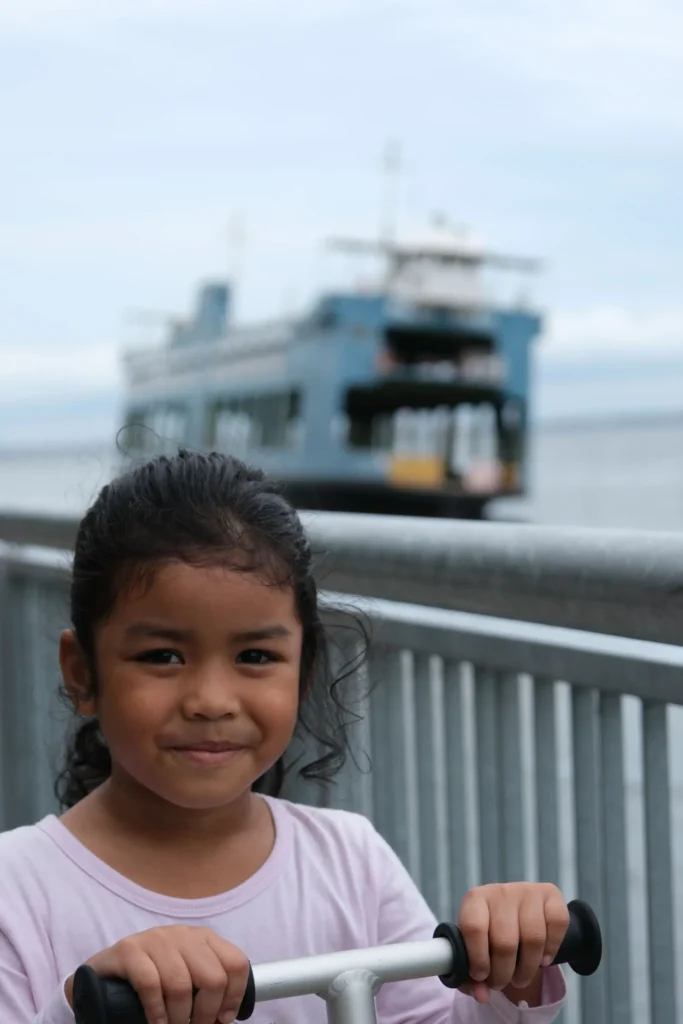
3) Canon EOS R System (APS-C): Canon EOS R10 / R50
The Canon R10 stands out for several key strengths, making it an ideal choice for both beginners and casual photographers. Its excellent Dual Pixel autofocus ensures fast and accurate tracking, making it perfect for fast-moving subjects. The user-friendly interface is designed with beginners in mind, making it easy to navigate and use right out of the box. Its compact and lightweight body enhances portability, making it easy to take on the go. Additionally, the R50 model is especially well-suited for vlogging, thanks to its strong video capabilities.
However, the camera does have some weaknesses, including a growing RF-S lens lineup, which may limit lens options for some users. Additionally, the R50 has limited physical controls, which might not appeal to more advanced photographers. Overall, the R10 is perfect for family vacations, casual travel, and vloggers. Its fast and reliable autofocus makes it excellent for capturing dynamic scenes, such as family trips and travel photography, where kids or moving subjects are always in action.
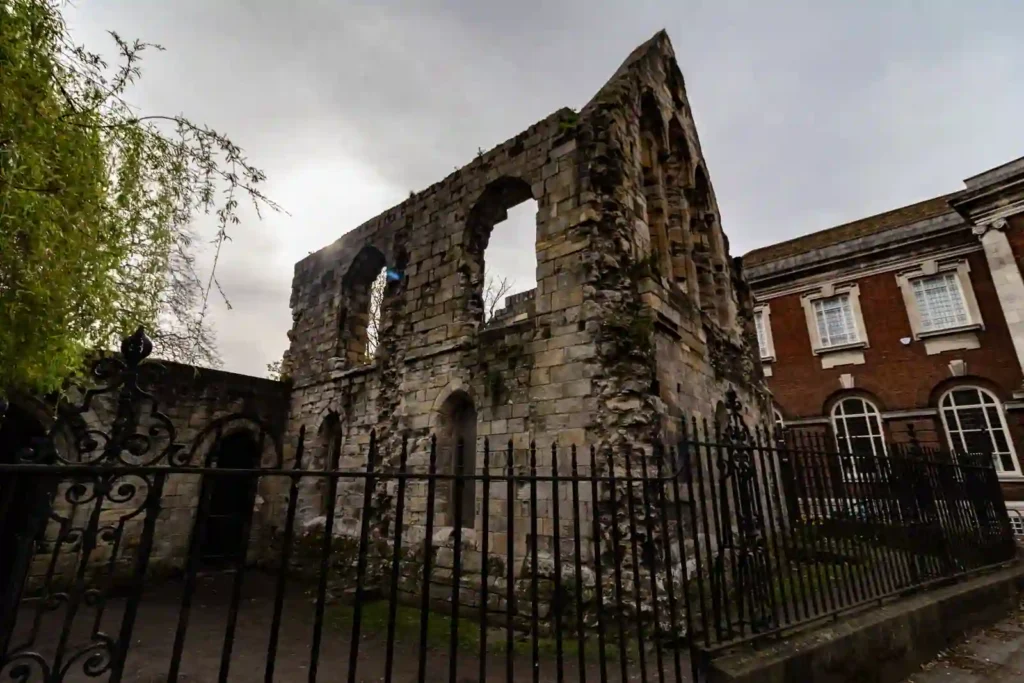
4) Panasonic Lumix G Series (Micro Four Thirds): Panasonic Lumix G9 II / GH5 II
The Panasonic GH5 II excels with its class-leading video features, offering 4K and 6K recording options that make it a top choice for videographers. Its excellent in-body image stabilization (IBIS) ensures smooth handheld shots, even in dynamic situations. The rugged build quality is another standout feature, making it perfect for photographers and videographers working in harsh conditions. Additionally, the compact lenses that pair with the GH5 II are ideal for travel, offering both portability and versatility.
However, the camera does have some limitations, such as its smaller Micro Four Thirds sensor, which leads to slightly reduced low-light performance compared to APS-C or full-frame cameras. Despite this, the GH5 II is ideal for serious videographers, wildlife photographers who benefit from the reach of MFT lenses, and adventure travelers. With its durability and video capabilities, it’s the perfect camera for travelers who need performance in challenging environments.
These mirrorless cameras have been carefully selected for their ability to handle the demands of travel photography. Whether you’re a solo vlogger, a family vacationer, or an adventure seeker, each of these models has unique strengths that can help you capture your travels with ease and precision. Use the suggestions and sample images to find the best match for your style, and you’ll be ready to take your travel storytelling to the next level.
Essential Lenses for Travel Photography
When it comes to travel photography, selecting the right lenses is just as important as choosing the right camera. Your lens kit should strike a balance between versatility, size, and performance, ensuring you’re prepared for a wide range of shooting scenarios while avoiding the burden of overpacking. Here’s a breakdown of the essential lenses to include in your travel kit, along with recommendations for different camera systems.
Understanding Lens Types for Travel
A versatile zoom lens, like the 24-70mm equivalent, is the workhorse of your camera kit. It offers a wide range of focal lengths, enabling you to capture everything from expansive landscapes to intimate portraits without the hassle of constantly swapping lenses. This lens is the go-to option for most travel situations, offering flexibility and convenience. To complement it, investing in a fast prime lens, such as a 35mm or 50mm equivalent, is ideal for low-light conditions and creating artistic shots. These lenses feature wide apertures that excel in low-light scenarios, providing a shallow depth of field for isolating subjects with a beautiful, blurry background. Additionally, they are compact and lightweight, making them perfect for travel.
For those capturing expansive landscapes or intricate architecture, a wide-angle lens (e.g., 16-35mm equivalent) is essential. It allows you to capture more of the scene in a single shot, whether you’re photographing sweeping vistas or tightly confined spaces. Finally, a telephoto zoom lens (e.g., 70-300mm equivalent) is indispensable for photographing wildlife, distant subjects, or compressed scenes. It brings distant subjects closer and provides a unique perspective by compressing the distance between objects, making it an essential tool for certain types of travel photography.
Lens Recommendations by System
When choosing lenses, it’s important to consider the compatibility with your specific camera system, as different systems have their own lens ecosystems. Here are some solid recommendations for popular systems:
For Sony E-mount (APS-C), the Sony E 18-135mm f/3.5-5.6 OSS is a great all-around zoom lens, offering everything from wide-angle to short telephoto focal lengths. Another excellent choice is the Sigma 16mm f/1.4 DC DN, a fast prime lens that excels in low light and delivers sharp, clear images with beautiful background blur.
For Fujifilm X-mount, the Fujifilm XF 18-55mm f/2.8-4 R LM OIS is a compact, versatile zoom lens with image stabilization, making it perfect for general travel use. If you’re looking for something slimmer and more compact, the Fujifilm XF 27mm f/2.8 R WR is a super-slim, wide-angle prime lens that’s ideal for street photography and everyday shots.
For Canon RF-S mount, the Canon RF-S 18-150mm f/3.5-6.3 IS STM is a versatile zoom lens that covers a wide range of focal lengths, making it ideal for various shooting conditions.
For Micro Four Thirds, the Panasonic Lumix G Vario 12-60mm f/3.5-5.6 ASPH. POWER OIS is a compact zoom lens, offering a good balance of reach and portability for general travel photography. For a higher-quality, compact zoom lens, the Olympus M.Zuiko Digital ED 12-45mm F4 PRO provides sharp images and reliable performance in various lighting conditions.
For Nikon Z mount (APS-C), the Nikkor Z DX 16-50mm f/3.5-6.3 VR is a small and lightweight zoom lens with a solid focal range for everyday travel shots. If you need more reach, the Nikkor Z DX 50-250mm f/4.5-6.3 VR is a superb telephoto zoom lens for getting close to distant subjects, ideal for wildlife and travel photography.
Choosing Your Travel Lens Kit
When assembling your travel lens kit, prioritize versatility and compactness to ensure you’re not weighed down by bulky gear. Here are a few tips:
- Versatility: A good travel lens kit should enable you to cover a wide range of shooting situations. A versatile zoom lens, such as a 24-70mm equivalent, will serve you well in most scenarios, from vast landscapes to portraits.
- Compactness: Travel means you’ll likely be on the move a lot, so having smaller, lighter lenses is a huge advantage. Consider adding a compact prime lens to your kit for its portability and low-light advantages.
- Focus on Your Interests: Consider your primary photography style whether you prefer landscapes, street photography, or portraits and select lenses that cater to those needs. For example, if you’re into architecture, a wide-angle lens will be a must. If you’re a street photographer, a fast prime lens, such as a 35mm or 50mm, is ideal.
Unsure Which Lenses Are Essential for Travel Without Overpacking
Travel photographers often face the challenge of packing light while still wanting to bring enough gear to cover different shooting situations. To avoid overpacking, focus on lenses that offer the most versatility and complement your travel style. A zoom lens (e.g., 24-70mm equivalent) for everyday shots, paired with a compact prime lens for low-light situations, will give you a well-rounded kit without unnecessary weight.
The Minimalist Traveler’s Guide for Lens Selection
For those looking to pack the lightest kit possible, here’s a minimalist lens guide:
- One versatile zoom lens: A 24-70mm equivalent lens will handle most situations without the need to swap lenses constantly.
- One compact prime lens: A 35mm or 50mm lens is ideal for low light and creative shots, without adding significant weight.
This setup enables you to capture a wide range of subjects while keeping your gear to a minimum, making it ideal for travelers who prefer a more minimalist approach.
By selecting the right lenses for your needs, you’ll be able to capture stunning images without the stress of overpacking. Keep your lens choices focused on versatility, portability, and performance, and you’ll be ready to capture every moment of your travels with ease.
Mirrorless Camera Comparison Table for Travel
| Camera Model | Sensor Size | Megapixels | Weight (Body Only) | Video Capabilities | IBIS | Weather Sealing | Battery Life (CIPA) | Price Range |
| Sony Alpha a6700 | APS-C | 26 MP | 493g | 4K 120p | Yes | Yes | 570 shots | $1,498 |
| Fujifilm X-T5 | APS-C | 40 MP | 557g | 6.2K 30p | Yes | Yes | 740 shots | $1,699 |
| Canon EOS R10 | APS-C | 24 MP | 429g | 4K 60p | Digital IS Only | No | 450 shots | $949 |
| Panasonic Lumix G9 II | MFT | 25 MP | 658g | 5.7K 60p | Yes | Yes | 390 shots | $1,589 |
| Nikon Z5 | Full-Frame | 24 MP | 675g | 4K 30p | Yes | Yes | 470 shots | $1,096 |
| Fujifilm X-S20 | APS-C | 26 MP | 491g | 6.2K 30p | Yes | Yes | 750 shots | $1,299 |
| Canon EOS R50 | APS-C | 24 MP | 375g | 4K 30p | Digital IS Only | No | 370 shots | $679 |
| Sony Alpha a6600 | APS-C | 24 MP | 503g | 4K 30p | Yes | Yes | 810 shots | $849 |
| Nikon Zfc | APS-C | 20.9 MP | 445g | 4K 30p | No | No | 300 shots | $1,036 |
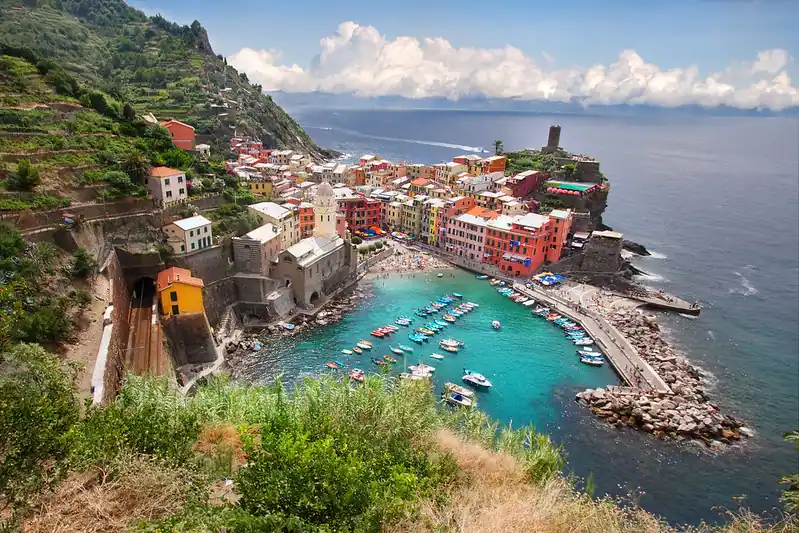
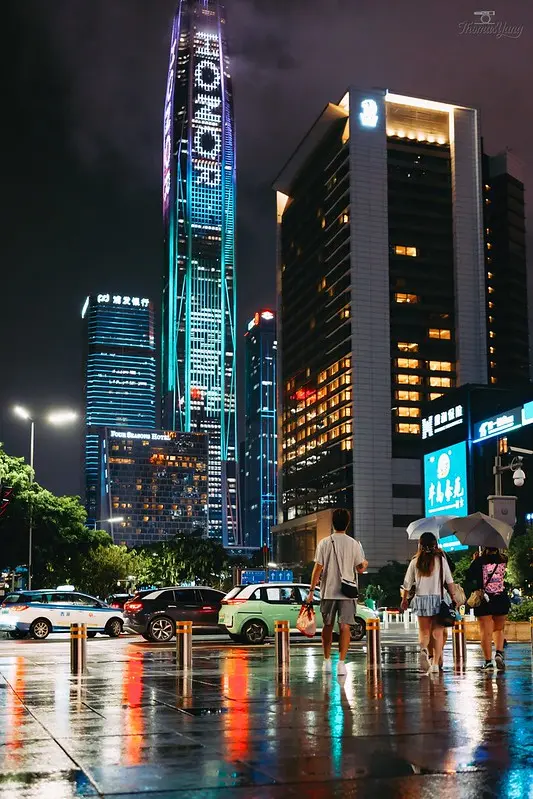

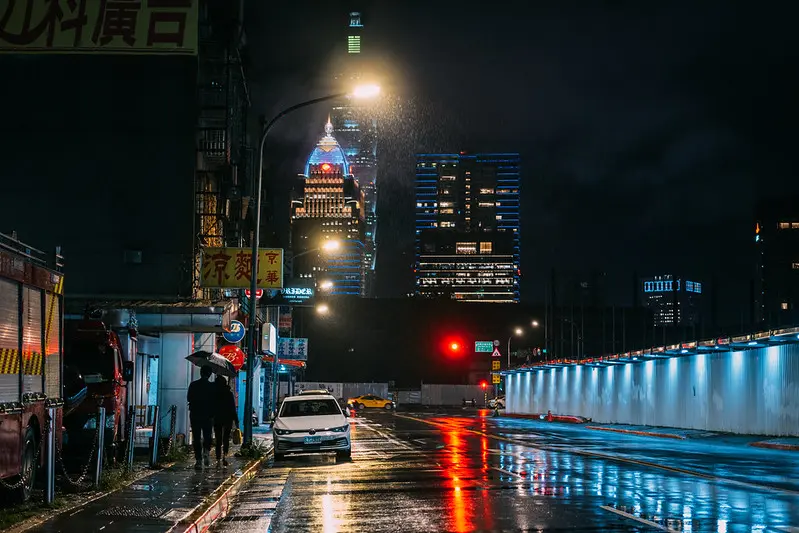
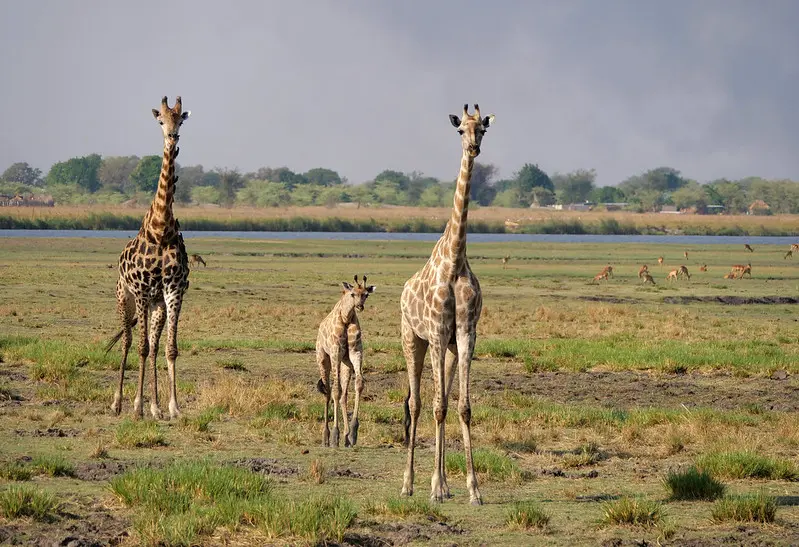
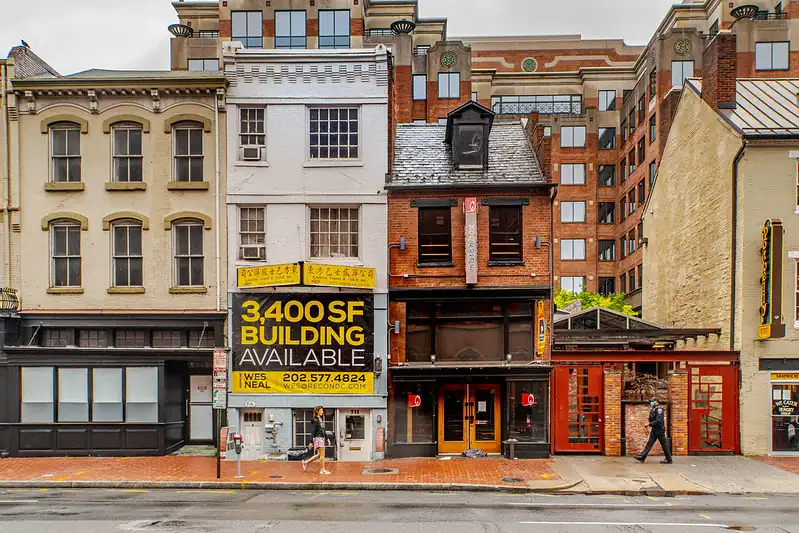
Must-Have Accessories for Travel Photographers
When traveling, it’s not just the camera that will make a difference it’s also the accessories you bring along. These items will help ensure you get the most out of your gear and make your experience smoother. Here’s a breakdown of essential accessories that no travel photographer should be without:
1. Extra Batteries & Portable Charger
Long shooting days and remote locations require extra power. Cameras, especially those equipped with high-resolution sensors and video capabilities, can quickly drain batteries.
Always carry at least one spare battery, and consider a portable charger, as access to power outlets is often limited when traveling. A portable charger allows you to charge while on the go, ensuring you never miss a shot.
2. High-Speed Memory Cards
Travel photographers often shoot in RAW format or capture 4K video, both of which require fast, high-capacity memory cards. These cards ensure that you can shoot continuously without worrying about storage limits or slow write speeds.
Key Features:
- Sufficient capacity to hold large RAW files and 4K videos.
- Fast write speeds for uninterrupted continuous shooting.
3. Lightweight Travel Tripod
A lightweight tripod is essential for shooting in low light, long exposures, or taking self-portraits. A sturdy, compact tripod can also be a lifesaver for capturing sharp images without camera shake.
Prioritize both compactness and stability. While you don’t want a bulky tripod that adds weight to your kit, you still need one that provides enough stability to keep your shots steady, especially in windy conditions or on uneven terrain.
4. Durable Camera Bag
A camera bag is your mobile storage unit, keeping your gear safe and easily accessible during your travels. It should also provide comfort for long days of photography on the go.
Look for a lightweight, durable camera bag that offers easy access to your camera and lenses while also providing good protection. Ideally, choose one with space for extra lenses and accessories, keeping everything organized and accessible.
5. Lens Cleaning Kit
Dust, fingerprints, and smudges can significantly impact the quality of your photos. To keep your lenses in top condition, a lens cleaning kit is essential for maintaining clear optics and ensuring optimal image quality. A good cleaning kit typically includes microfiber cloths for gentle cleaning without scratching the lens, a lens pen to remove stubborn spots and debris, and an air blower to blow away loose dust and particles without touching the lens. With these tools, you can easily keep your lenses free of unwanted marks and ensure that your photos are always crisp and clear.
6. Protective Filters (UV/CPL)
Filters protect the front element of your lens and can enhance the image quality. A UV filter shields against scratches and dust, while a Circular Polarizer (CPL) reduces glare and makes the skies appear more vibrant by enhancing contrast.
7. Portable Hard Drive or Cloud Storage Subscription
Backing up your photos is essential, especially when traveling in remote areas where access to computers may be limited. Regularly backing up your work prevents data loss from accidental damage or corruption of your memory cards.
Choose a portable hard drive or a cloud service that allows you to back up your photos while on the go. Cloud storage subscriptions are perfect for freeing up space on your camera and ensuring your memories are safe, no matter where you are.
8. Build Your Travel Camera Kit
Encourage your readers to imagine building their ideal travel photography kit by virtually pairing the recommended cameras with compatible lenses and accessories. You could create an interactive section where readers can select a camera model, then choose lenses and essential accessories tailored to their specific needs. This will provide them with an estimated total weight and cost, helping them decide on the most practical setup for their travels.
You might consider linking to an external tool or creating a call-to-action that encourages readers to build their kit. Alternatively, you could integrate a similar recommendation directly into the content to help readers visualize the total weight and price of their kit.
These accessories, combined with your camera gear, will help ensure that you’re ready to capture beautiful moments no matter where your travels take you. Remember to prioritize portability and practicality to keep your setup light but functional.
Travel Photography Tips with Your Mirrorless Camera
When traveling, your mirrorless camera can be a powerful tool for capturing stunning photos. With the proper techniques and settings, you can master your camera and handle even the most challenging travel conditions. Here are some essential tips to help you get the most out of your gear and capture breathtaking images while on the move.
1. Mastering Basic Settings for Travel
Mastering your camera settings is essential for capturing the perfect shot in any situation. Two key modes to understand are Aperture Priority (Av/A) and Shutter Priority (Tv/S).
Aperture Priority (Av/A) allows you to control the depth of field, making it ideal for portraits where you may want a blurred background, or landscapes where everything needs to be in sharp focus. In this mode, you set the aperture, and the camera automatically adjusts the shutter speed for the correct exposure.
Shutter Priority (Tv/S) is useful when you want to control the shutter speed, whether to freeze fast-moving action, like wildlife or moving vehicles, or create motion blur, such as with waterfalls or busy crowds. The camera will adjust the aperture accordingly to ensure the exposure is balanced.
While manual mode provides complete creative control, aperture and shutter priority modes are perfect for quicker adjustments, especially when you’re in dynamic travel environments. Learning how to use these modes effectively will give you the flexibility to adapt to various shooting conditions and capture your best photos.
2. ISO Management
Managing ISO effectively is crucial when shooting in low-light conditions. To capture clearer images in darker environments, increase your ISO in situations like indoor settings or evening shots. This allows your camera to capture more light. However, it’s important to remember that higher ISO settings can introduce noise, which may affect image quality.
To minimize noise, try using noise reduction techniques in post-processing or aim to shoot with a lower ISO if the lighting allows for it. Stick to ISO values that help maintain image clarity, and only increase it when absolutely necessary. Many travelers find it challenging to capture high-quality photos in difficult lighting, but by understanding how to adjust your ISO settings, you’ll be able to produce sharper images with minimal noise, even in low-light environments.
3. Composition Techniques for Captivating Shots
Composition can make a huge difference in how engaging your photos are. Here are some tips to improve your composition:
- Rule of Thirds: Imagine your frame divided into a 3×3 grid. Place your subject along these lines or at the intersections for a balanced, aesthetically pleasing composition.
- Leading Lines: Use natural lines in your scene (e.g., roads, rivers, buildings) to lead the viewer’s eye to the main subject or deeper into the frame.
- Framing: Frame your subject using natural elements, such as windows, doorways, or branches. This adds depth to the image and guides the viewer’s attention to the subject.
- Symmetry: Symmetry can make a photo feel balanced and visually striking. Look for reflections or architectural structures that offer symmetrical elements.
- Unique Perspectives: Experiment with shooting from low angles or capturing reflections in water or glass to add a fresh perspective to your photos.
4. Leveraging Mirrorless Features
Mirrorless cameras come with features that make shooting easier and more intuitive for travel photographers. Here’s how to make the most of them:
- Electronic Viewfinder (EVF): The EVF enables you to see exposure and white balance adjustments in real-time, allowing you to adjust settings on the fly to achieve the perfect shot.
- Articulating Screen: An articulating screen allows you to shoot from various angles, whether you’re holding the camera overhead or at waist height. This is especially useful for capturing crowds or tight spaces without discomfort.
- Wi-Fi/Bluetooth Connectivity: With built-in Wi-Fi and Bluetooth, you can transfer photos directly to your phone or tablet for quick sharing on social media while on the go.
5. Post-Processing Fundamentals (RAW Advantage)
Shooting in RAW format gives you the flexibility to adjust your images after the fact, especially in challenging lighting conditions. Here’s how to handle your RAW files effectively:
- Why Shoot in RAW: RAW files retain more detail in shadows and highlights than JPEGs, allowing you to make significant adjustments in post-processing without losing quality. Don’t shy away from shooting in RAW for maximum flexibility in editing. Even if you’re a beginner, RAW files give you more room to fix exposure or color issues later.
- Basic Adjustments:
- Exposure: Adjust exposure if your image is too dark or bright.
- Contrast: Enhance or reduce contrast for a more dynamic photo.
- White Balance: Fine-tune the white balance for accurate color reproduction, especially in challenging lighting conditions.
- Mobile Editing Apps: Use apps like Lightroom or Snapseed for quick edits on the go. These apps enable you to adjust exposure, color, and other settings directly from your phone or tablet.
6. Protecting Your Gear on the Road
When traveling, your camera gear is exposed to the elements, so it’s essential to protect it adequately:
- Proper Packing and Storage: Use a padded, durable camera bag that keeps your gear safe from bumps and moisture. Always store your camera in a dry, cool place when not in use.
- Dealing with Dust, Sand, and Moisture: If you’re traveling in dusty or sandy environments, make sure to keep your camera in a protective case. If you’re shooting in the rain, consider using a weather-sealed camera or a rain cover for added protection.
- Travel Insurance Considerations: Consider purchasing travel insurance for your camera gear. This ensures that you’re covered in case of damage or theft during your travels.
Durability & Real-World Performance Insights
Experienced travel photographers frequently encounter the challenges of keeping their gear safe and operational in harsh environments. In addition to protecting your gear, long-term durability is a key factor in choosing the right camera. Mirrorless cameras are designed to handle rough conditions, with many models offering weather sealing, robust construction, and efficient battery life, allowing photographers to continue capturing shots without worrying about their equipment.
By focusing on practical tips for settings, composition, and gear protection, you’ll be ready to face any travel photography challenge that comes your way. Keep these tips in mind, and you’ll be capturing stunning travel images in no time.
These tips will help you maximize the performance of your mirrorless camera while traveling, ensuring you’re prepared for any situation that may arise. Let me know if you’d like to dive deeper into any of these techniques!
Conclusion:
As you venture into the world of travel photography, choosing the right camera is more than just about the technical specs it’s about finding a tool that lets you capture the beauty and stories of your journey. Mirrorless cameras are a game-changer for travel photographers, offering a perfect blend of portability, image quality, and versatility. Whether you’re shooting landscapes, street scenes, or documenting your travels, these cameras provide the tools you need to elevate your photography without the burden of heavy gear.
Key Takeaways:
- Portability: Mirrorless cameras are significantly lighter and more compact than traditional DSLRs, making them the ideal choice for travelers who need to carry their gear around all day.
- Image Quality: With advanced sensors and enhanced low-light performance, mirrorless cameras deliver professional-grade image quality in a compact, lightweight package.
- Versatility: Whether you’re shooting photos or videos, mirrorless cameras offer a wide range of lenses, advanced autofocus systems, and impressive video features, allowing you to adapt to any situation on the go.
Recommendations:
- The Minimalist Traveler: For those who prefer traveling light, consider an APS-C or Micro Four Thirds (MFT) mirrorless camera paired with a single prime lens. A small, compact body, such as the Fujifilm X-S20 or Sony Alpha a6600, paired with a fast prime lens (e.g., 35mm or 50mm), will give you flexibility without adding bulk.
- The Adventurous Photographer: If your travels involve hiking, exploring rugged terrain, or shooting in unpredictable weather, focus on a weather-sealed camera with a durable body. The Panasonic Lumix G9 II or Sony Alpha a6700 offers excellent build quality, weather sealing, and solid image stabilization, making them perfect for the adventurous traveler.
- The Family Documentarian: For capturing the candid, fast-moving moments of family life, you’ll want a user-friendly camera with reliable autofocus. Cameras like the Canon EOS R50 or Sony Alpha a6600 are great options for families, offering excellent autofocus and ease of use, which allows you to capture those precious moments quickly.
- The Aspiring Vlogger: If video is your primary focus, look for a camera with strong video capabilities and good in-body stabilization (IBIS). Cameras like the Fujifilm X-T5 or Sony Alpha a6700 offer 4K or higher video resolution, excellent autofocus for smooth video, and stabilization to keep your footage steady even when on the move.
Choosing the right mirrorless camera isn’t just about specifications it’s about choosing a camera that enhances your ability to tell your travel stories. The right gear should inspire you to capture the world around you, offering you freedom without feeling like a burden. Invest in the camera that resonates with your style, needs, and photography aspirations, and watch your travel memories come to life like never before.
Ready to transform your travel photography? Explore the top recommended mirrorless cameras and start planning your next adventure today!
With the right gear in hand, you’ll be capturing moments that last a lifetime. As a team of seasoned photographers and gear enthusiasts, we bring years of experience in photography, travel, and gear reviews to ensure that our recommendations are based on real-world testing and expertise. Whether you’re a professional photographer or an enthusiastic traveler, we’ve got the insights to help you make the best decision for your travel photography needs.
By focusing on the key elements that matter most portability, quality, and versatility you’ll be ready to capture your travels like never before. Your adventures are waiting, and with the right mirrorless camera, you can bring them to life.
FAQs About Travel Mirrorless Cameras
As you consider investing in a mirrorless camera for your travel photography, you might have some questions. Below, we’ve answered some of the most common queries to help you make an informed decision.
Q: Are mirrorless cameras suitable for beginners?
Answer: Yes, many mirrorless camera models come with user-friendly interfaces, automatic modes, and simple controls. They allow beginners to start shooting with ease while still providing ample room to grow as their skills improve. As you get more comfortable, you can experiment with manual settings and advanced features.
Q: How do mirrorless cameras compare to smartphones for travel photography?
Answer: Mirrorless cameras offer significantly larger sensors, interchangeable lenses, and better low-light performance, which leads to superior image quality compared to smartphones. You also gain more creative control over settings like depth of field, exposure, and focus, which smartphones often lack. While smartphones are convenient for casual shots, a mirrorless camera is a better option for more serious, high-quality travel photography.
Q: Is a full-frame necessary for travel photography?
Answer: Not necessarily. APS-C and Micro Four Thirds (MFT) cameras provide excellent image quality and are more compact and affordable than full-frame options. These formats are often perfectly sufficient for travel needs and are much lighter, making them ideal for travelers who need to balance gear performance with portability.
Q: What’s the most essential feature for a travel camera?
Answer: It depends on your specific priorities, but portability, image quality, and battery life are typically the most crucial factors for travel photographers. If you plan to be outdoors or in unpredictable weather, weather sealing is also an important feature. A versatile lens system is essential if you want to shoot a variety of scenes without constantly switching lenses.
We understand that purchasing a camera can be a significant investment, and you may be concerned about selecting one that won’t meet your specific needs. By focusing on portability, image quality, and battery life, you’re more likely to find a camera that suits your travel photography style without complicating your decision unnecessarily.
Q: How can I make my camera setup lighter for backpacking?
Answer: To lighten your setup for backpacking, consider these tips:
- Choose a compact camera body.
- Opt for prime lenses (such as a 35mm or 50mm) or a single, versatile travel zoom (e.g., 24-70mm equivalent).
- Only pack essential accessories, such as extra batteries and memory cards, leaving behind unnecessary gear.
- For ultimate weight savings, consider a Micro Four Thirds system, as these cameras and lenses are designed to be as light and portable as possible.
With these FAQs, we hope to address any lingering questions and help you feel confident about your choice of mirrorless camera for travel. Whether you’re a beginner or an experienced traveler, the right camera will empower you to capture beautiful memories without holding you back on your journey.

